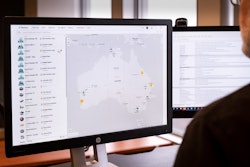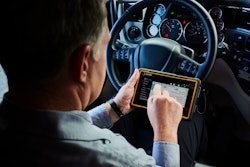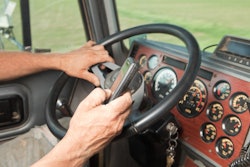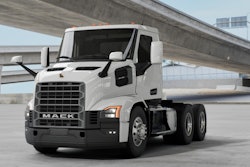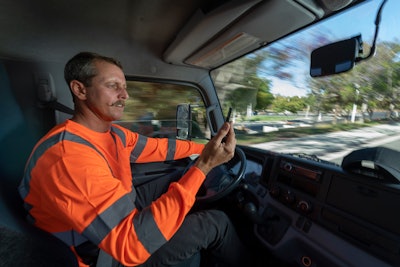
The number of fatalities caused by vehicle crashes climbed in 2021.
According to preliminary semiannual estimates from the National Safety Council, collision fatalities in 2021 totaled 46,020, up 9% from 2020 and 18% from 2019, and on average eight people are killed in driver distraction-affected crashes daily.
"Distracted driving accounts for nearly 10% of fatal crashes in the U.S.," said Noah Budnick, executive director for Together for Safer Roads. "Adding to this heartbreak is that these crashes are preventable. Distracted driving is a public health epidemic that we must address."
Video telematics providers like Lytx and Samsara, among others, are working to do just that, and according to data, it’s working – at least among commercial fleets that adopt such technology.
Gary Johnson, director of safety services at Lytx, said it’s important for fleets to adopt driver self-coaching technology that can help prevent crashes instead of waiting until an accident occurs to have a safety manager train them, especially as crashes reduce uptime which has an even harsher effect during supply chain disruptions and driver shortages.
“Our clients who have embraced the technology really have seen a decrease in those overall crashes,” Johnson said.
Samsara has had the same experience and, following a recent survey of its enterprise customers, found that 72% saw a decrease in distracted driving when using Samsara technology.
The Lytx data shows distraction-related commercial driving collisions are on the decline.
The data, released during April’s Distracted Driving Awareness Month, was derived from more than 35 billion miles driven among 1.6 million drivers of Lytx’s fleet clientele in 2021. That 35 billion is up 5% from 2020 and 15% from 2019, and there was a 29% increase in the number of trucking trips from 2020 to 2021.
But even as the number of miles and trips were on the rise, there were fewer commercial driving accidents. The data shows that collisions went down 5% from 2020 to 2021 and 25% from 2019 to 2021.
Lytx said top distracted driving behaviors were down, too: mobile phones in hands (down 61%), driver smoking (down 40%) and food or drink distractions (down 86%).
Lytx offers machine vision artificial intelligence that immediately notifies the driver of any unsafe behaviors the client selects to identify such as a cellphone in hand. The Lytx device will send an in-cab alert to the driver that it has detected risky behavior. The driver has a certain amount of time to self-correct, and if that doesn’t happen, the system notifies the driver’s company for further coaching.
Samsara, which also offers AI dash cams, said in-cab alerts are one of the best ways to change behavior because it flags risky behavior as it happens so drivers can refocus their attention in the moment.
Together for Safer Roads surveyed drivers and found that more than half of drivers view themselves as safer and more careful following in-cab camera adoption.
Samsara said one-on-one coaching to high-risk drivers is another way to change behavior. Samsara offers data on distracted driving and speeding – or safety scores that aggregate a wide array of risk data – that can help identify drivers who would benefit from one-on-one coaching or additional training.
Lytx offers self-coaching via its driver app where drivers can look back at their video footage at the end of the day or while on break to see what took place and correct it.
“We always talk about the videos being just like game film for professional athletes. Well, these are professional drivers, so by them being able to see their game footage or their driving footage, they can actually look at it and correct it,” Johnson said. “In 2021 … we had seen 103% more drivers self-coach than any time period before … Because of that, we saw a reduction in the risk by 11%, and we saw a 34% reduction in overall events – overall triggers or behaviors.”
Samsara said another important factor in improving driver safety is using the technology as a tool to engage drivers and reward positive behavior as opposed to a means of punishment, which can negatively impact drivers’ views of dash cams.
Here are some additional data points Samsara concluded in its recent review of more than 9.8 million distracted driving alerts from March 1, 2021 to March 31, 2022 among passenger, light-duty and heavy-duty vehicles across all industries it serves, including transportation, utilities, field services and manufacturing, among others:
- The average speed when a distracted driving event occurs is 55 MPH – a speed at which a vehicle can travel the length of a football field in five seconds.
- Another leading cause of collisions is speeding. Drivers speed nearly a quarter of the time for trips between two and two-and-a-half hours. According to Samsara speeding data from January 1, 2022 to March 31, 2022, drivers across all vehicle types spent 24% of their trip speeding. Light-duty vehicles spent 30% of their trip duration speeding – the highest in comparison to heavy-duty and passenger vehicle trips.
- Distracted driving events occur less frequently on the weekend and most frequently in the afternoon.



